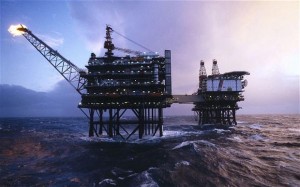 WTI and Brent futures were slightly lower during midday trade in Europe today, ahead of advanced readings on US oil inventories. Meanwhile, natural gas futures rose, as weather patterns called for rising temps over the US later this week.
WTI and Brent futures were slightly lower during midday trade in Europe today, ahead of advanced readings on US oil inventories. Meanwhile, natural gas futures rose, as weather patterns called for rising temps over the US later this week.
WTI for September delivery traded for $98.19 per barrel at 12:49 GMT on the NYMEX, down 0.10% for the day. Prices ranged from $98.11 to $98.67 per barrel. The US benchmark added 0.4% on Monday, after having lost some 4.2% last week, with the September contract reaching a three-month low of $97.09 per barrel.
Meanwhile, September Brent on the ICE had dropped 0.22% to trade at $105.18 per barrel. Daily low and high were at $105.13 and $105.65 per barrel, respectively. Brent’s premium to its US counterpart stood at $6.99, after Monday’s closing margin of $7.12. The European benchmark added 0.5% yesterday, after dropping 3.3% last week alone, for the September future to reach a four-month low of $104.39 per barrel.
“The market is stable because of a combination of two things. On the one hand you see geopolitical tensions … but on the other hand you see maintenance from refineries and enough supply,” Hans van Cleef, senior energy economist at ABN Amro in Amsterdam, said for Reuters. “At this moment the market is mainly supply driven.”
The private American Petroleum Institute (API) will post its weekly reading on US oil inventories for the seven days ended August 1 today, and analysts expect a figure of -4.40 million barrels for crude. Meanwhile, a Bloomberg survey suggested gasoline stock will see draws for the first time since June in this week’s report, probably logging at 300 000 barrels lower, while a Reuters poll projected no change. The official EIA report is tomorrow.
Last week, US motor gasoline stockpiles rose to 218.2 million, a four-month high, despite the US being in the middle of the peak driving season, while supplies at Cushing, Oklahoma, dropped to 17.9 million barrels, the lowest since October 2008, down from 18.8 million a week earlier. Crude oil inventories, however, fell for a fifth week by 3.7 million barrels to 367.4 million in the seven days through July 25th, while distillate fuel stockpiles, which include diesel and heating oil, added 0.789 million barrels.
Meanwhile, developments in Iraq and Libya hardly shocked anyone over the recent few days, with rebels making little gains in Iraq, only to retreat later and more turmoil in Libya. Things could hardly get worse for Libya, currently OPECs smallest producer at some 450 000 barrels per day, while Iraqs output has been untouched by the conflict with the Islamic State at 2.4 million barrels per day.
Natural gas
Natural gas futures for delivery in September were up 0.42% to trade at $3.850 per million British thermal units (mBtu) at 12:51 GMT on the NYMEX today. Prices ranged from $3.826 to $3.862 per mBtu. The contract gained 0.95% on Monday, after adding some 0.3% last week, when a six-month low of $3.725 was reached.
This week’s Energy Information Administration (EIA) report will reveal another significantly larger-than-average build for natgas inventories, analysts at NatGasWeather.com said. Last week’s injection was almost double the average at 88 billion cubic feet.
The analysts also say, that the following week’s log will post more large gains, as weather this week will allow for moderate cooling demand at most. Markets will struggle for direction, as temps will climb along with rising supplies.
NatGasWeather.com reported today that the northern and western US will see showers, storms and comfortably low temperatures in the next few days, some localized drops to the 60s possible, followed by a several-degree rise for temps, as high pressure builds up towards week’s end. The southern US will remain quite hot, with highs reaching triple digits. Overall cooling demand will be low-to-moderate.
Next week will start off with high pressure and seasonal to above-seasonal temps, the analysts suggest. Around midweek, however, a cooler Canadian system is due to head south into the US, bringing rains and clouds, and lowering temps back to comfortable, allowing for more sizable natgas builds.





